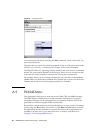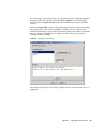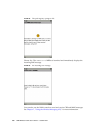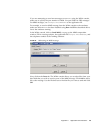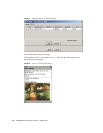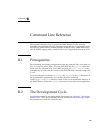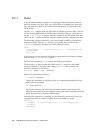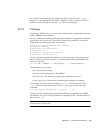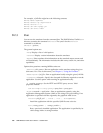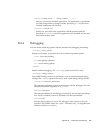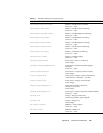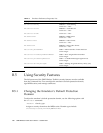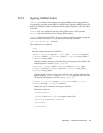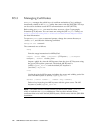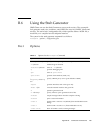
106 J2ME Wireless Toolkit User’s Guide • October 2004
For example, a JAD file might have the following contents:
MIDlet-Name: MyMIDlet
MIDlet-Vendor: My Organization
MIDlet-Version: 1.0
MIDlet-Jar-URL: MyApp.jar
MIDlet-Jar-Size: 24601
B.2.3 Run
You can run the emulator from the command line. The J2ME Wireless Toolkit’s bin
directory contains the command emulator. The syntax for the emulator
command is as follows:
emulator [options]
The general options are:
-help: Display a list of valid options.
-version: Display version information about the emulator.
-Xquery: Print emulator skin information on the standard output stream and
exit immediately. The information includes the skin name, screen size, and other
capabilities.
Options that pertain to running MIDlet suites are:
-Xdevice:<skin_name>: Run an application on the emulator using the given
skin name. For a list of skin names, see Chapter 4, “Using the Emulator.”
-Xdescriptor:<jad_file>: Run an application locally using the given JAD file.
-classpath <classpath>: Specify the classpath for libraries required to run the
application. Use this option when running an application locally.
-D <runtime_property>: Set the HTTP and HTTPS proxy servers. Valid
properties include:
com.sun.midp.io.http.proxy=<proxy host>:<proxy port>
-Xjam:<command>=<application>: Run an application remotely using the
Application Management System (AMS) to run using OTA provisioning. If no
application is specified with the argument, the graphical AMS is run.
install=<jad_file_url> | force | list | storageNames|
Install the application with the specified JAD file onto a device.
run=[<storage_name>|<storage_number>]
Run a previously installed application. The application is specified by its
valid storage name or storage number.



